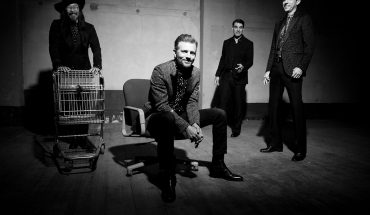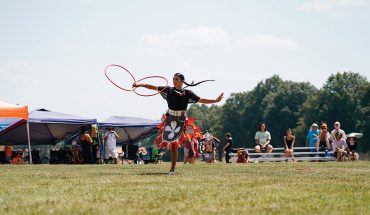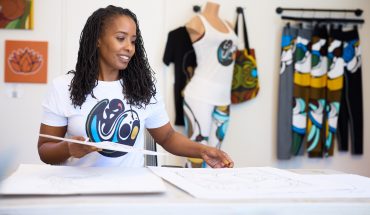
Jaime Hayon, SCULPT. C, 2016, painted wood and metal, H. 117.3 x W. 288.2 x D. 94.1 in., North Carolina Museum of Art, Gift of the family of Bill and Holly Blanton
“We want to connect art and nature and people,” says Marjorie Hodges, director of external relations at the N.C. Museum of Art, and a key player in the museum’s Art in the Environment Fund. To accomplish this simple but profound goal, the Fund has enhanced much of the 164-acre Ann and Jim Goodnight Museum Park, transforming it into a lush landscape of native plants, greenway trails, and art that complements it all. You might already know the iconic earth-cast ellipses that comprise Thomas Sayre’s Gyre, or remember those larger-than-life inflatable bunnies by artist Amanda Parer on loan last fall: They’re two distinct examples of what public outdoor art can look like, and just a sliver of the genre’s vast possibilities. “We don’t want (art in the park) to be static,” Hodges says. “We want to constantly inspire creativity and engagement.”
Since the park is free and open to the public – visitors often come through on a greenway walk or bike ride – the art will continue to span the spectrum, with something to appeal to everyone. Hodges says it will remain dynamic thanks to a mix of permanent installations and works on loan, collaborations with other art institutions, and constant interaction with Raleighites.
The museum reached out to include all of its diverse park audience in March with the installation of its newest permanent work, Sculpt C. The zig-zag-patterned pig-shaped sculpture, meant to be an interactive kids’ play structure, inspired the museum to host a social media competition for its nickname (which had yet to be unveiled at press time). Meanwhile, last month, Jaume Plensa’s pair of massive human heads, Awilda & Irma, made of steel mesh (a stunning long-term loan) were installed. They are as as striking as Parer’s bunnies and will likely enjoy a similar level of local Instagram fame, Hodges predicts. “The idea of public art having a role in these shareable moments is, I think, a great way to think about art.”

Jaume Plensa, Awilda & Irma, 2014, stainless steel, H. 157.5 x W. 157.5 x D. 118 in. each, © J2017 Jaume Plensa, Courtesy Galerie Lelong, New York. Installation view: Jaume Plensa: Human Landscape, Cheekwood Museum and Sculpture Garden, Nashville, TN, May 22–November 1, 2015; Photo: Dean Dixon.
The future holds even edgier Museum Park art. Hodges says we can look forward to works that combine light, sound, color, and digital interaction. The Art in the Environment Fund’s vision is an exciting one for NCMA, and also for the city and the region. “So much of public art is about accessibility. People can just stumble upon this. You don’t have to pay to see it, and it doesn’t matter what you’re wearing. It’s accessible and it’s inclusive, and that’s so important.” –J.A.



